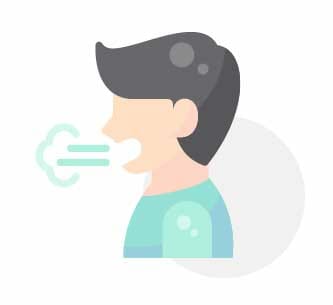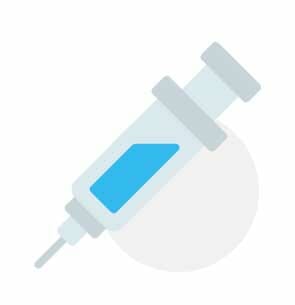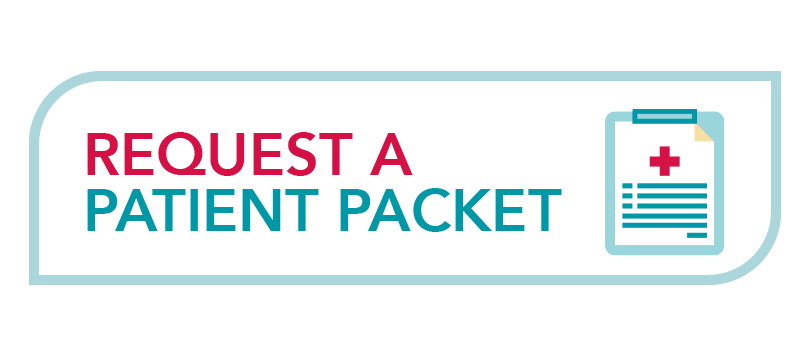
 If you’re experiencing shortness of breath, fatigue, or chronic cough, it might be time to speak to your doctor about getting tested for COPD (chronic obstructive pulmonary disease).
If you’re experiencing shortness of breath, fatigue, or chronic cough, it might be time to speak to your doctor about getting tested for COPD (chronic obstructive pulmonary disease).
COPD is a serious lung condition that a person can develop from long-term exposure to tobacco smoke, chemicals, fumes, and other harmful pollutants, including ammonia or asbestos.[1] If you’ve been exposed to any of the previously mentioned symptoms, and you’re experiencing COPD-related symptoms (i.e. chronic cough, difficulty breathing, recurring respiratory infections, mucus buildup, changes in sputum color, tightness in chest, etc.) contact your doctor to test for COPD, as early intervention can help manage your symptoms and could even slow the progression of this disease.
How to Test for COPD
There are a number of ways your clinician may test for COPD, but the most common approaches to diagnosing this condition include:
- Spirometry
- Computerized Tomography (CT) Scan
- Arterial Blood Gas Analysis
In this article, we’ll discuss all three options, and how they work to help diagnose a prevalence of COPD in patients experiencing difficulty breathing.
 What Is a Spirometry Test?
What Is a Spirometry Test?
A spirometry test, which is considered the most basic, non-invasive type of lung function test, is used to help measure the maximum amount of air you can hold inside your lungs. It also tests how forcefully you can release and empty air from your lungs.[2]
How It Works:
“For this test, you blow air into a mouthpiece and tubing attached to a small machine. The machine measures the amount of air you blow out and how fast you can blow it.”[3]
As mentioned above, a spirometry test is just one type of lung function test.[4] Others include:
- Lung Volume Testing – used to measure the volume of air in your lungs, as well as the amount of air that is left over after you exhale.
- Diffusing Capacity Testing – used to test the frequency and ease of oxygen as it travels to your bloodstream.
- Exercise Testing – used to measure your blood pressure and heart rate during physical activity, such as running on a treadmill or riding on a stationary bicycle. This allows your clinician to determine what might be causing you to experience shortness of breath.
These tests may be conducted in place, or in combination, of spirometry testing and are repeated multiple times for greater accuracy.
 What Is a Computerized Tomography (CT) Scan?
What Is a Computerized Tomography (CT) Scan?
In a previous article, we discussed the difference between a chest x-ray and a high resolution CT scan, as the latter is used to diagnose bronchiectasis, a chronic lung condition that shares many similarities to COPD but requires a different treatment plan.
Your clinician may first recommend a chest x-ray of your lungs, followed by a CT scan for a more thorough examination.
How It Works:
The CT scan allows your clinician to capture “numerous cross-sectional pictures of the lungs and other organs inside the chest (as well as blood vessels and bones) from various angles, which are then combined by a computer into 3-D images.”[5]
Using these images, your clinician can then measure the size and shape of your chest organs to inspect for disease or other abnormalities that may be contributing to your symptoms.
As with spirometry, this is a non-invasive procedure, although you won’t need to perform the same test multiple times as you would with a pulmonary function test. Instead, a scanner is used to capture images as you pass through it. The entire test takes, on average, 20 minutes to complete and provides a deeper analysis of your lungs and how they function.[6]
 What Is an Arterial Blood Gas Analysis?
What Is an Arterial Blood Gas Analysis?
An arterial blood gas analysis is used to help measure a patient’s oxygen and carbon dioxide levels in the bloodstream. Unlike other approaches to testing for COPD, a procedure like this is traditionally conducted in an emergency-type situation, when a patient is unable to breathe.[7] Therefore, your clinician may recommend this test if you are being hospitalized for COPD-related symptoms.
How It Works:
“A doctor may start with a modified Allen test to determine how well blood is flowing to the hand. This involves applying pressure to the arteries in the wrist to obstruct the blood flow for no more than 15 seconds, causing the hand to change color.”[8]
After your clinician releases pressure from your wrist, your hand will either return to its regular color within several seconds or stay the same. If your hand color returns to normal, your doctor will begin the blood test. If not, your doctor will need to try a different test.
Using a small needle, your clinician will draw blood from one of the arteries in your wrist to begin the test. So, this procedure is slightly more invasive than the options listed above. And it’s important to note that many clinicians will perform an arterial blood gas analysis in addition to a chest x-ray or lung function test for greater accuracy.[9]
Which COPD Test is Right for Me?
Based on your reported symptoms, health history, and other contributing factors, you and your doctor will decide whether a spirometry, CT scan, or arterial blood gas analysis (or a combination of the three) will provide the most accurate diagnoses of your individual condition. For instance, if you recently experienced a heart attack, stroke, or head injury, your doctor may not recommend a lung function test like exercise testing.[10]
Next Steps and Resources
To get started, contact your clinician about your symptoms, so you can work together to discuss your options and get tested for this chronic lung condition. The SmartVest Airway Clearance System is an HFCWO therapy that could help you find relief from your symptoms and be on your way to breathing easier. How SmartVest works is it helps loosen, thin, and propel mucus towards major airways, where it’s easier to cough out.
> If you’ve already received your diagnosis, request a SmartVest informational packet to learn more about the therapy and ultimately discuss with your doctor.
 > If you need help finding a doctor in your area or would like to chat about your options, schedule a time that works for you to speak with our Patient Care Advocate, who is also a Respiratory Therapist.
> If you need help finding a doctor in your area or would like to chat about your options, schedule a time that works for you to speak with our Patient Care Advocate, who is also a Respiratory Therapist.
We also offer a YouTube channel that features interviews and videos from renowned pulmonologist Dr. Frederic Seifer that you can share with loved ones for more information.
Be sure to also check out the COPD Foundation, American Lung Association and other online sources to join active COPD communities to hear stories, get tips, and connect with others on your journey to living and breathing better!
Resources
[1] COPD Foundation. “What Is COPD?” Retrieved from https://www.copdfoundation.org/What-is-COPD/Understanding-COPD/What-Causes-COPD.aspx
[2] American Lung Association. “Lung Function Tests.” Retrieved from https://www.lung.org/lung-health-diseases/lung-procedures-and-tests/lung-function-tests
[3] American Lung Association. “COPD Symptoms and Diagnosis.” Retrieved from https://www.lung.org/lung-health-diseases/lung-disease-lookup/copd/symptoms-diagnosis
[4] American Lung Association. “Lung Function Tests.” Retrieved from https://www.lung.org/lung-health-diseases/lung-procedures-and-tests/lung-function-tests
[5] COPD News Today. “Chest CT Scan.” Retrieved from https://copdnewstoday.com/copd-diagnosis-and-tests/chest-ct-scan/
[6] COPD News Today. “Chest CT Scan.” Retrieved from https://copdnewstoday.com/copd-diagnosis-and-tests/chest-ct-scan/
[7] Medical News Today. “What Is a Blood Gas Test?” Retrieved from https://www.medicalnewstoday.com/articles/322343
[8] Medical News Today. “What Is a Blood Gas Test?” Retrieved from https://www.medicalnewstoday.com/articles/322343
[9] Medical News Today. “What Is a Blood Gas Test?” Retrieved from https://www.medicalnewstoday.com/articles/322343
[10] American Lung Association. “Lung Function Tests.” Retrieved from https://www.lung.org/lung-health-diseases/lung-procedures-and-tests/lung-function-tests

